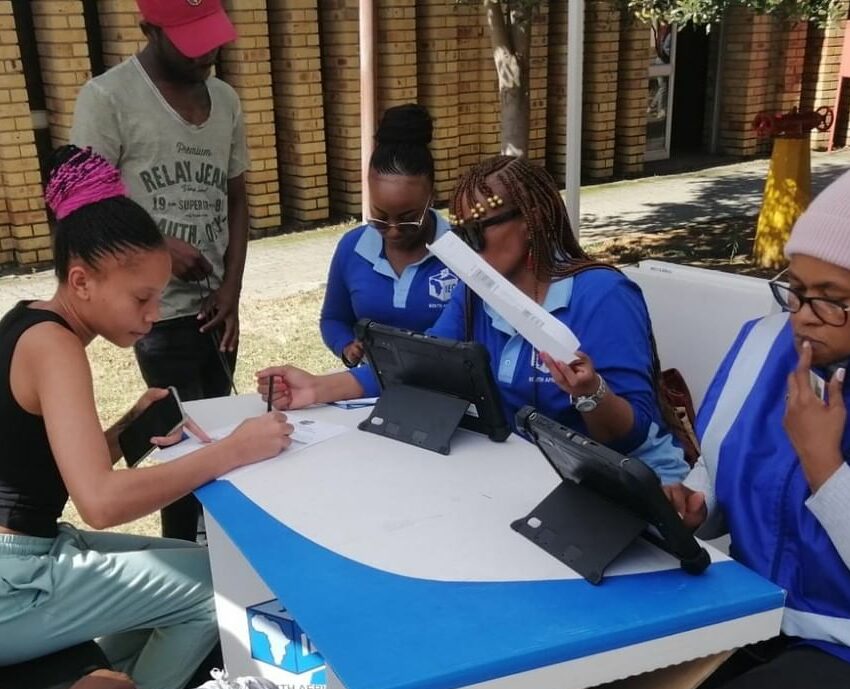
With this year’s general elections fast approaching, knowing the process of how to make your mark (with an X) is of paramount importance.
If you want to stay in the know of what to do on 29 May, the Independent Electoral Commission (IEC) provides an eight-step guide on what will happen when you can cast your vote to make a change in the nation.
Step 1: Find your correct voting station
“Ensure that you have the address for the correct voting station for the voting district in which you are registered,” explains the IEC. Voting stations may be in the form of schools, community centres or church buildings. If a building is not available, voting stations may be set up under tents in parks or other open land.
“In some sparsely-populated rural areas, we use specially adapted vehicles as mobile voting stations. Every voting station has large clear signs outside marking it as a voting station,” notes the IEC.
Voting stations are open from 07:00 to 21:00 on election days.
Step 2: Before entering the voting station, present your valid identification document (ID) to the door controller
An election official – who serves as a door controller – will check the validity of your ID. This may be your green barcoded ID book, smart-card ID or temporary ID certificate.
Once your ID is scanned, you will be presented with a slip confirming that you are a registered voter. The IEC states, “The door controller will also tell you when it is your turn to enter the station and will advise where to go once inside the voting station.”
Step 3: Check that you are on the voters’ roll
As you make your way inside the voting station, you will proceed to the voters’ roll table. Here, the election officials will take your ID document, and check for your name and ID number on the segment of the national common voters’ roll for that voting district.
“Your name will then be crossed off – this is a manual mechanism for ensuring that voters only vote once,” says the IEC. “An election official will then ink your left thumb nail. This is a special ink that will not wash off your nail for several days. This ink mark will show everyone that you have participated in the election.”
Step 4: Get your ballot papers
Ballot papers will be handed to you. These papers each have unique numbers. “You must make sure that there is a stamp at the back of your ballot papers to verify that they were issued to you on that Election Day,” the IEC advises, who also shares the following:
“For national and provincial elections, voters generally receive two ballot papers (one for the national and one for the provincial election), whereas for municipal elections, voters in metros and local councils receive two ballot papers (one for a ward councillor and one for a political party as part of the PR section of the election). Voters in areas which form part of a district council receive a third ballot paper for the district council election.”
Step 5: ID gets stamped
After you have received your ballot papers, an elections official will stamp your ID to show your participation in the general elections – this is in relation to voters who presented their green ID book.
Step 6: Find a voting booth and make your ‘X’
After being directed to an empty voting booth, it is time to make your decision and place an X – NOT a tick – in the box next to the political party and/or candidate of your choice.
Feel like you might make a mistake while casting your vote? The IEC states the following:
“To avoid a spoilt ballot, ensure that you make only one mark on each ballot paper and that your mark is clear. If you make a mistake, call an election official and they will provide you with a new ballot paper.”
Once you are done, fold your ballot papers in half and exit the voting booth.
Step 7: Cast your vote
To make sure that things are still going smoothly, an election official stationed at the ballot box will check that there is a stamp at the back of each of your ballots. Once the checks have been made, drop your completed ballot paper through the slot at the top of the ballot box.
Step 8: Exit the voting station
Now that you have officially voted, you will be directed to the exit.
The IEC shares, “Remember that political party representatives and independent observers (both national and international) are present throughout the voting and counting process to observe the process and to ensure it is free and fair.”
Also see: 5 Reasons why you need to vote this year




